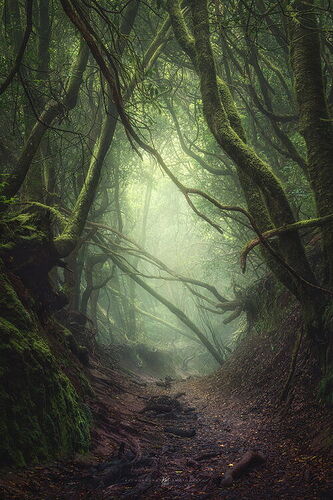If you’re not an NPN member yet, you can join our free tier to ask questions in the AMA or to get the full benefits of what we offer; you can join here.
Hi, I’m Kai Hornung, a landscape and fine art photographer based in Hanover, Germany. I am excited to do this AMA with you here at NPN.
For me, inspiration is everything. It’s what drives my photography, my teaching, and my creative journey. I have been creative ever since childhood when drawing images with dinosaurs and spaceships. Later, I wanted to become a professional soccer or tennis player. When I was a teenager, another form of expression entered my life and never left: being a singer of a rock band and writing lyrics for our own songs. As a child of the 80s and 90s, music videos were deeply engrained, so having visuals in mind while writing vocal lines and lyrics came naturally. Photography was a fun side hobby. I captured family travels and my kids and played around with being creative with a camera.
From 2016 on, I started to embark on a journey to 'really‘ get into photography, registered my photo business in 2018, and made the jump into part-time professional photography in 2022. By then, I had guided and led some workshops, won some awards, saw my images get published globally, and was happy to see my audience grow. Over the years, my photography has grown into both a career and a passion that continually challenges and inspires me. My current project, writing my first book, Finding Small, has been a deeply reflective process. It’s pushed me to explore not just why I photograph but also how each person’s unique life journey shapes their artistic voice. Our images are a great way to communicate with each other beyond what words can do. My experiences as a musician and my love for different arts taught me about storytelling, emotion, and the power of art to connect with people on a personal level. That same desire to evoke emotion and tell stories now guides my work as an artist.
I work in HR four days a week and have mentored and taught young professionals for over 20 years. This experience helps tremendously in teaching photography. Assisting others to unlock their creative potential and discover their own creative voices is one of the most rewarding parts of doing photo workshops or onlinementoring.
I look forward to receiving your questions and contributing to this inspiring community.
Website: https://kaihornung.com/
AMA Rules:
- Please only ask one question by replying to this topic a single time, using the “Ask a question” button at the bottom. It’s also helpful to scroll to the bottom while reading the topic to make sure nobody else has asked the same question first before you ask.
- Please don’t ask more than one question so everyone gets a chance.
- Please do not reply to anyone else’s post. The only purpose of replies on this topic is to ask the author one question. Please create a new topic if you’d like to discuss a related topic in more detail.
Posts not following these rules may be removed by moderators to keep the Q&A flowing smoothly. Thank you!





